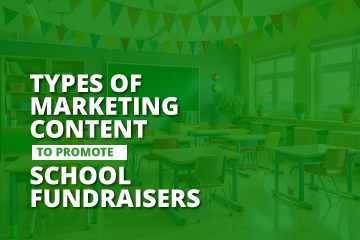Some of SchoolMoney.org’s Most Popular Articles
Happy New Year, SchoolMoney.org’s readers and followers! We covered a wide variety of exciting education-related topics geared toward students, educators and anyone else who is committed to student success. To recap, here’s a snapshot look at our most popular articles!
Most Popular Posts of 2015
1. “Homeschooling: Advantages and Disadvantages”
An increasing number of parents are deciding to homeschool their children—in 2012, roughly 2 million children were homeschooled, double the amount from 2001. As with any educational system, there are many advantages and disadvantages that parents must weigh when deciding whether or not homeschooling is the best option for them and their child, and this article takes a brief looks at both sides.
Some advantages parents might find in homeschooling, for instance, are personal control of curriculum, pace of learning, and overall flexibility in terms of schedule and curriculum work to fit with lifestyle. On the other hand, disadvantages parents must consider are time restraints, financial restrictions, and their children’s lack of social interaction.
2. “Literacy Rates in the United States”
What is literacy? How serious is the problem? Why is this a problem? This fascinating article briefly addresses these common questions. The fact is that literacy, the ability to read and write with minimal comprehension, is currently an issue in the United States that is not improving significantly. Tests indicate that roughly 14% of American adults would have trouble with comprehension of reading and writing, and only 18-21% of the American population qualifies as being highly literate. While we are fortunate to live in a very literate age, with open access to information through technology, this also means that being illiterate today is a bigger socioeconomic hurdle than ever before.
3. “Should Cell Phones be Allowed in the Classroom?”
With cell phone technology playing a more integral role in our everyday lives, including those of today’s children, the debate of whether or not cell phones should be permitted in the context of the classroom has become increasingly complicated.
There are certainly positive benefits to children having cell phones with them at school. For example, cell phones make communication much easier between parents and their children in the case of an emergency. Additionally, with the development of educational apps, there are many ways in which cell phones can be utilized to incorporate more interactivity into the learning process. On the other side of the debate, cell phones can be a problem in the classroom in the sense that they create the possibility for distraction. Also, because cell phones are so small and provide access to endless amounts of information, students can easily use them to cheat on tests and exams.
4. “Teaching the Arts in Schools: Why is it Important?”
When schools face budget cuts, the arts curriculum is often one of the first to get cut or downsized in favor of math and science classes. While many people may think that the arts are not necessary for cognitive development or student success, much to the contrary studies show that learning about and participating in the arts contributes to the child’s development and well-being. In general, there are many positive benefits to receiving an arts curriculum as a child, and this article captures many of them.
In children, for example, learning and practicing art helps develop motor skills, cognitive functioning (a child’s ability to be creative in their actions and thoughts), perceptual skills, self-confidence, motivation to learn, communication, and understanding of culture, human behavior, and history. Studies also show that for “at-risk” students and those of low socioeconomic status, receiving and arts education helps improve academic outcomes, encourage higher career goals and foster civic engagement.
5. “The Pros and Cons of Liberal Arts Degrees”
“What do you plan to do with that?” This is the question that many liberal arts majors have to answer about their choice of major. With rising tuition costs, students today may feel pressured to have a more solid answer as to how their financial investment in a four year degree will pay off in the long-run in terms of career prospects. So is there value in a liberal arts degree? The answer to this question has been subject to much debate, and this article takes at arguments on both sides.
Opponents of liberal arts degrees, for example, have argued that because liberal arts majors on average make less and are more likely to be underemployed than “STEM” (Science, Technology, Engineering, Mathematics) majors, liberal arts programs should receive less funding. On the other hand, proponents of liberal arts degrees point to the broad range of skills liberal arts majors acquire in their studies, and the flexible nature of their career prospects.
Our Readers Also Liked
1. “The Problem with For-Profit Colleges”
Today, we have access to more types of post-secondary educational institutions than ever before, including an increasing abundance of for-profit colleges. For-profit colleges or institutions are run by the private sector with the intention of providing an education for students, typically in a focused vocational area such as nursing, culinary arts, auto repair, clerical studies, dental, or medical. Unfortunately, there are many underlying issues with for-profit colleges, and this article takes a look at some of them.
For-profit colleges have come under intense scrutiny, especially in recent years due to studies performed by the U.S. Senate Committee, which exposed many issues with for-profit colleges. To name a few, these studies found that for-profit colleges have the highest number of student loan defaulters, have the lowest rates of graduation, have exorbitant tuition costs, and often promise inflated and unrealistic employment opportunities and potential salaries.
2. “How to Pick the Best Study Abroad Program for You”
If you’ve thought about studying abroad, luckily there are many types of study abroad programs currently available to college students, meaning your opportunities are practically endless! What this means, however, is that identifying which program is the best fit for you can be difficult if you don’t know the right questions to ask. This article will help you narrow-down your choices by having you answer three basic questions: “Why do you want to study abroad?”, “How long do you want to be abroad?” and “How much independence do you desire overseas?”
Depending on how you answer these questions, you will likely lean toward a certain type of program, and this article will help familiarize you with the three most common types: short-term faculty-led programs, co-sponsored/affiliated programs, and exchange/direct enrollment programs.
3. “Make Quick Cash: Easy Jobs for Broke Students”
If you’re in college and find yourself running low on cash, or could use some extra money for things you want to do, this article will help give you some creative ways in which you can make some quick extra money. For instance, did you know you can get paid $3,000 to get the flu? If this doesn’t appeal to you, however, there are other ways to make some quick cash, such as getting paid by marketing research companies for your opinion. Also, if you like to shop, there are a few ways to rake in rewards and potentially get paid for the shopping you’re already doing.
4. “Why Do High School Students do Poorly in Math and Science?”
International tests indicate that American high school students perform worse in the areas of math and science in comparison to other countries. The big question: Why? What factors regarding the American education system and society contribute to poor performance in these two academic subjects? This article highlights and discusses some of the factors that theorists and researchers have focused on regarding this topic, including poverty, issues with teachers and teaching methods, and politics.
5. “Online Degree Programs: How to Spot a Scam”
The convenience of having quick and readily available access to technology in today’s society has caused an increase in eLearning and online degree programs. While online education has created new opportunities for students, especially non-traditional students and working students, there are online degree programs that do not offer a quality education in return for the money they take from their customers.
If you are considering pursuing an online degree, this article will help you understand what to look for in order to avoid becoming victim of an online scam program. For instance, many scam programs promise speedy degrees, have a very easy and non-selective admissions process, and sometimes even use names that are similar to well-known programs.
6. “College Tuition: Where Does the Money Go?”
College tuition by a substantial amount over the years and, consequently, so has the average amount of American student loan debt. So why does tuition keep increasing, and where does all of the tuition and fee money go exactly? A common misconception is that most tuition and fees go to pay for the cost of instruction (i.e. faculty salary). This article lists some of the other costs involved in a college’s budget, as well as some of the reasons for tuition increases, including decreased state funding, increases in spending, and institutional prestige.
More on the way from SchoolMoney.org!
We hope you enjoyed reading these articles as much as we enjoyed writing them! We will have more exciting content on the way in 2016, so be sure to sign up for our newsletter, or follow us on Twitter, Facebook, and Pinterest!




